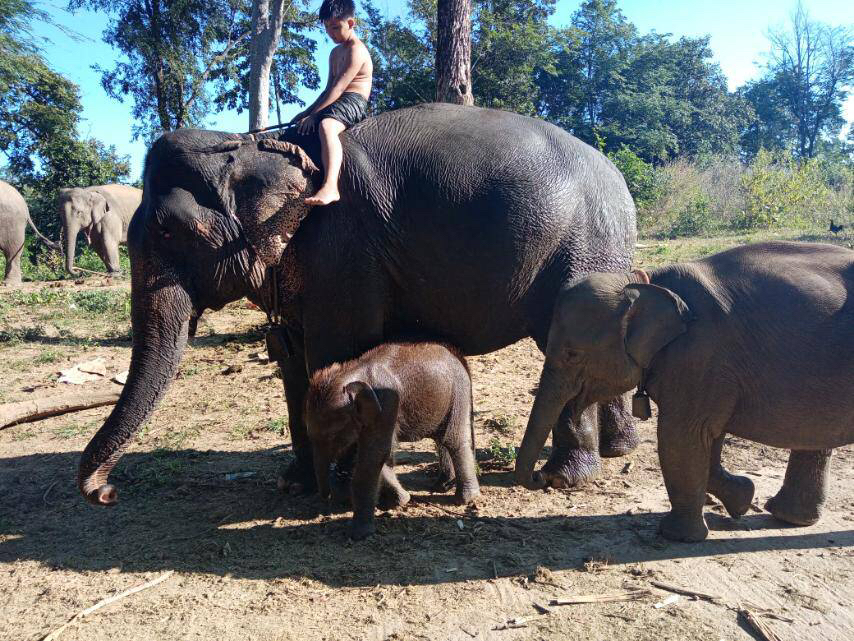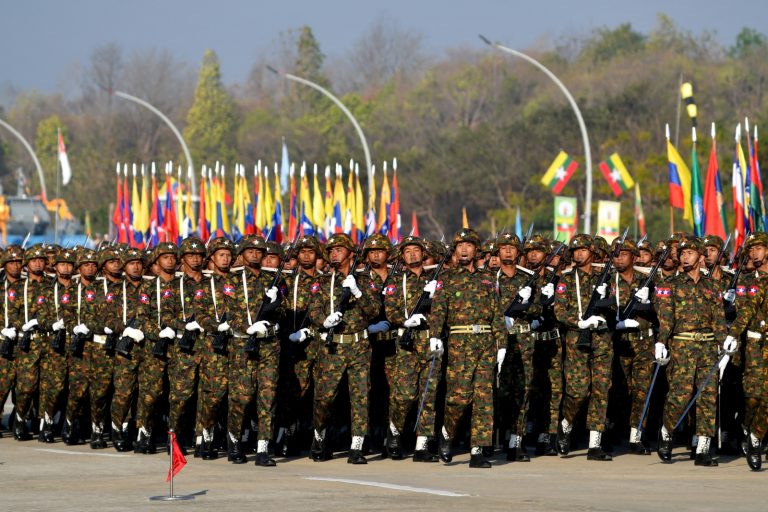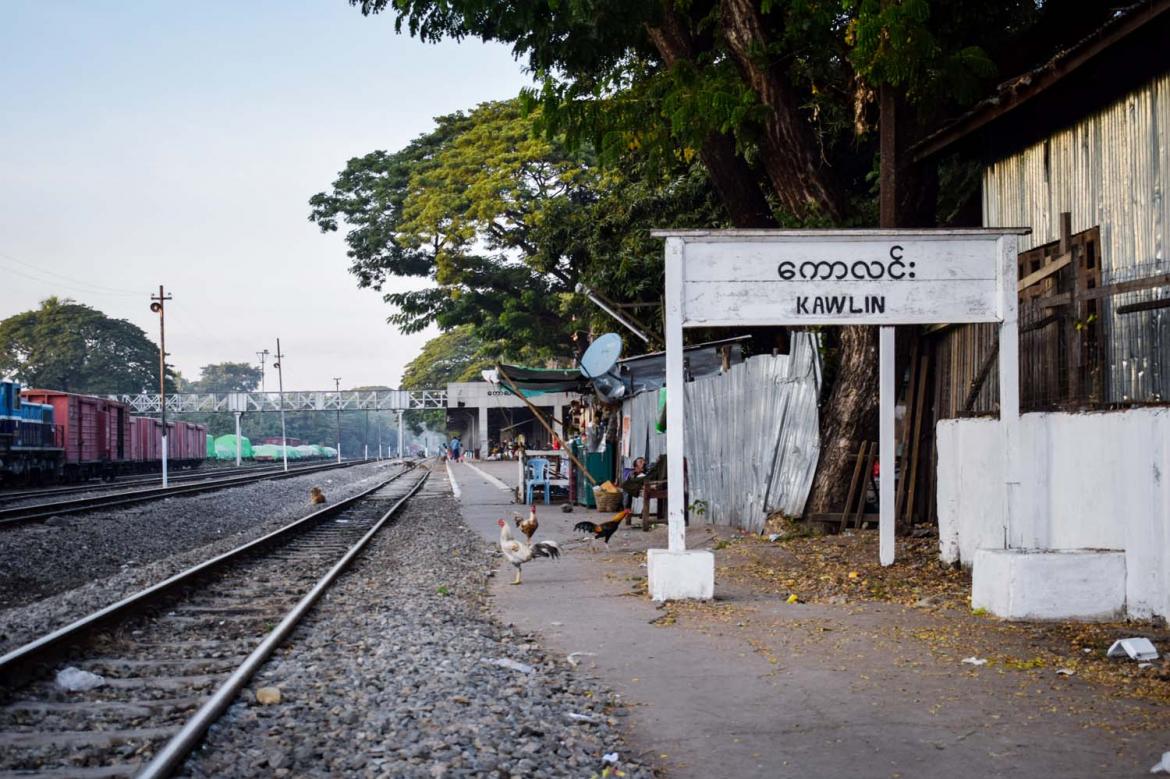In the aftermath of the coup, many elephants were abandoned when their civil servant handlers went on strike. But in one of Myanmar’s largest national parks, the revolution is also a reunion.
By FRONTIER
In May 2021, Ko Cho decided to walk away from his job with the Forest Department after 20 years because he no longer wanted to be associated with a junta that was killing peaceful protesters. But by leaving his job, he was also forced to leave behind a beloved family member.
Ko Cho, 42, and his wife wept at the looming separation as they packed up their belongings in their government-provided housing at the Alaungdaw Kathapa National Park.
“It is impossible to take him with us; we don’t even know where we will be going,” he told the other members of his family of five.
“My heart is broken to leave you, son,” a crying Ko Cho said, as he tenderly caressed the neck of his beloved Nay Toe when the time came to depart.
Ko Cho had cared for Nay Toe since his birth 12 years earlier, naming him after a famous Burmese film star. A powerful bond had developed between them during that time, but the killings in cities far away had made it impossible for Ko Cho to continue his work.
There was also the fact that Nay Toe was not his; the three-metre tall elephant had been owned by the Forest Department since birth.
Ko Cho and Nay Toe had worked together at the 1,402 square kilometre Alaungdaw Kathapa National Park, which sprawls across parts of Kani and Mingin townships in Sagaing Region. One of the largest national parks in Myanmar, it protects one of the biggest remaining tracts of native forest in the country and is named after a legendary monk.
The monk is venerated at a shrine deep in the park and during the pilgrimage season, from December to May, elephants and their handlers, known in Myanmar as oozis, provided transport for visitors to the revered site. Although riding elephants is no longer considered an ethical form of tourism in many places, and some travel companies now exclude it on the grounds of sustainable tourism and concerns over animal welfare, it remains very popular in Myanmar.
For Ko Cho, it was a source of great pride that Nay Toe’s strength and intelligence had often been admired by pilgrims in the swaying chair on his back en route to the shrine. But he felt he had to leave those memories behind after learning of the junta’s brutality.
“I was disgusted by how evil they are; I could not work under them anymore,” he told Frontier.
Another reason for quitting was dissatisfaction with his salary. After 20 years’ service with the department, Ko Cho was earning K100,000 a month, with another K40,000 to cover Nay Toe’s food. (At exchange rates from May last year when he quit, his base salary was about US$85 a month; it would now be worth even less).
When Ko Cho walked out on the department, joining the mass exodus from the public service known as the Civil Disobedience Movement, he wasn’t alone.
“If it had been my decision alone, I would not have been able to do it, but there was a consensus among all the oozis to join the CDM,” he said. There were 33 oozis at the national park, said Ko Cho, adding that all of them were full of sorrow to leave their elephants, a total of 35 animals including two young calves.
The oozis and their families were living in government-provided housing in the park before joining the CDM. Some handlers returned to their family hometowns, while others moved to villages outside the park. Only the administrator and about half a dozen staff remained at Alaungdaw Kathapa, which was reported to have closed in June 2021, a month after the oozis left, according to US-based group Global Conservation.
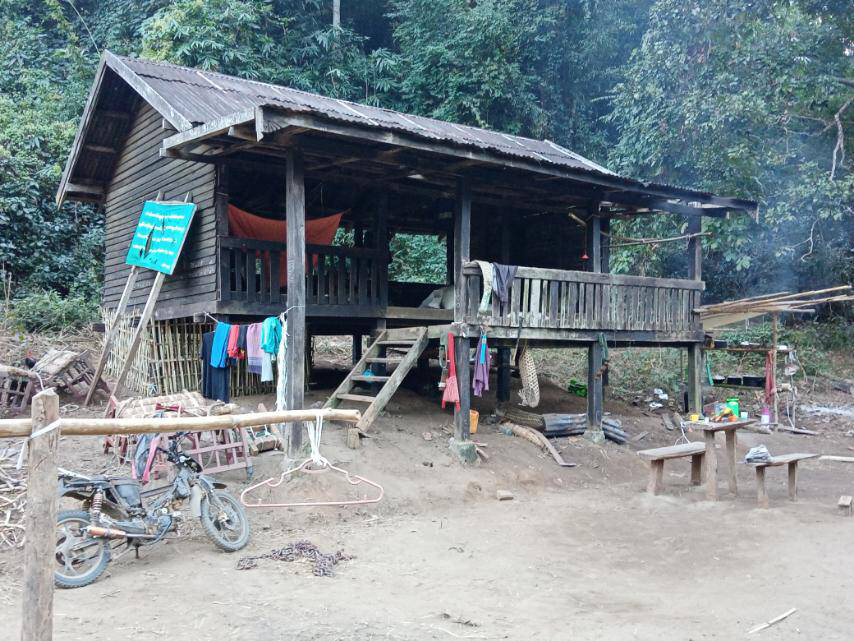
Taking up arms
Ko Cho’s life changed dramatically after he and his family left the park and moved to Yinmabin Township in Sagaing Region, which shares a boundary with Kani Township and his old park.
He changed his honourific to “Bo”, meaning soldier or brave man, and joined the Yinmabin People’s Defence Force. The anti-coup armed group, headed by Bo Thanmani, a former abbot who left the monkhood to join the resistance movement, was tainted by controversy over accusations in March this year that it had been involved in robbery, torture and killings.
Bo Cho, as he’s now known, is a fighter in the PDF’s Battalion 1; many of the oozis from the Alaungdaw Kathapa National Park have joined People’s Defence Forces.
The growing strength of resistance groups in Sagaing Region has led to heavy fighting since August last year and resulted in brutal punitive raids on villages by regime forces, who have killed residents and torched their homes.
The few remaining staff of the Alaungdaw Kathapa National Park left in August. Soldiers took their place, establishing a base there.
After the oozis joined the CDM, their 35 elephants were left to wander the park and largely fend for themselves. Some joined the herds of wild elephants deep in the park’s forests but others remained close to where the oozis had lived, receiving secret visits from their keepers who fed them when they could.
Whenever possible, Bo Cho risked his life to return to the park for reunions with Nay Toe, to bring him food and check on his health. The elephants need to be vaccinated regularly against diseases, including anthrax, which is highly infectious and can be fatal.
“I used to regularly sneak into the park to check on Nay Toe’s health and wellbeing, even though I know I could be shot if the junta soldiers see me while they are on patrol,” he said.
As PDFs in Sagaing grew in strength, they soon began launching coordinated attacks. This forced military troops to withdraw from swathes of territory, including a hilltop base inside the national park. For now, Alaungdaw Kathapa is under PDF control.
“Our PDF leader granted us permission to take care of the elephants,” Bo Cho said. All 35 elephants have since been rounded up and taken to safe places deep in the park where the PDF fighters have established bases. Some of the elephants that had joined wild herds were caught and brought back to the group.
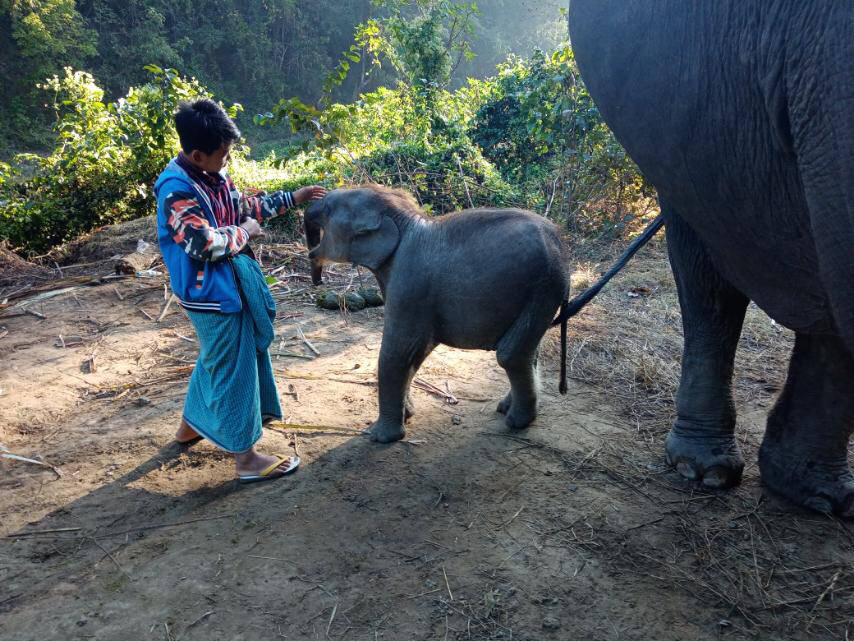
Ancient creatures in modern industries
Elephants have been used in public life in Myanmar for centuries, primarily in the logging industry, but also in religious and official ceremonies and in tourism. Despite the global push to end the use of the animals in commercial and public activities, their use in these sectors continues in Myanmar.
There are around 4,500 domesticated elephants still in working roles in Myanmar according to a 2018 estimate by the Forest Department. The wild population however has more than halved in the last 50 years, dropping from around 6,000 wild elephants in 1970 to less than an estimated 3,000 in 2018.
Some conversationists have attempted the “rewilding” of individual caged or domesticated animals. In one of the largest of such efforts, in 2019 five elephants in Laos were gradually reintroduced to the wild in the Nam Pouy National Protected Area by the Elephant Conservation Center.
Rewilding is a lengthy process that involves gradually reconditioning animals over a long period under the supervision of trained specialists, with long-term monitoring. The chances of domesticated elephants surviving in the wild without a supported transition are limited, as they usually lack both the skills to survive and a protective herd to guide them.
The 35 elephants in Alaungdaw Kathapa National Park are now back with their former keepers. The relationship between man and elephant is viewed as a kind of partnership by the oozis who raise and work with them, rather than of ownership, and Bo Cho feels strongly about the welfare of the animal under his control.
In Alaungdaw, before the coup, the elephants and their oozis had to work five days a week for the five-month-long tourist season. Visitor numbers were so high at times that the park had to hire logging elephants from the Myanma Timber Enterprise, sometimes doubling to as many as 70 elephants in the busiest months. Handlers like Bo Cho weren’t happy with the amount of work the elephants were forced to do.
“I feel that Nay Toe and I have greater freedom now, because in the past the Forest Department treated us as slaves that they owned,” he said, adding forcefully, “Nobody owns the elephants, nobody!”
The residents of a local village are contributing funds for the care of the animals, as are private donors, who donate via a Facebook page. In return, Bo Cho says “The elephants are now helping the PDF and local village people.” Nay Toe and other elephants are being used for transport, including carrying timber to rebuild houses that were torched by soldiers.
PDF leader Bo Thanmani has declared that the conservation of the animals and the environment in Alaungdaw Kathapa National Park is a priority, and the PDF has detained several people for illegal logging and hunting in the area, destroying their equipment.
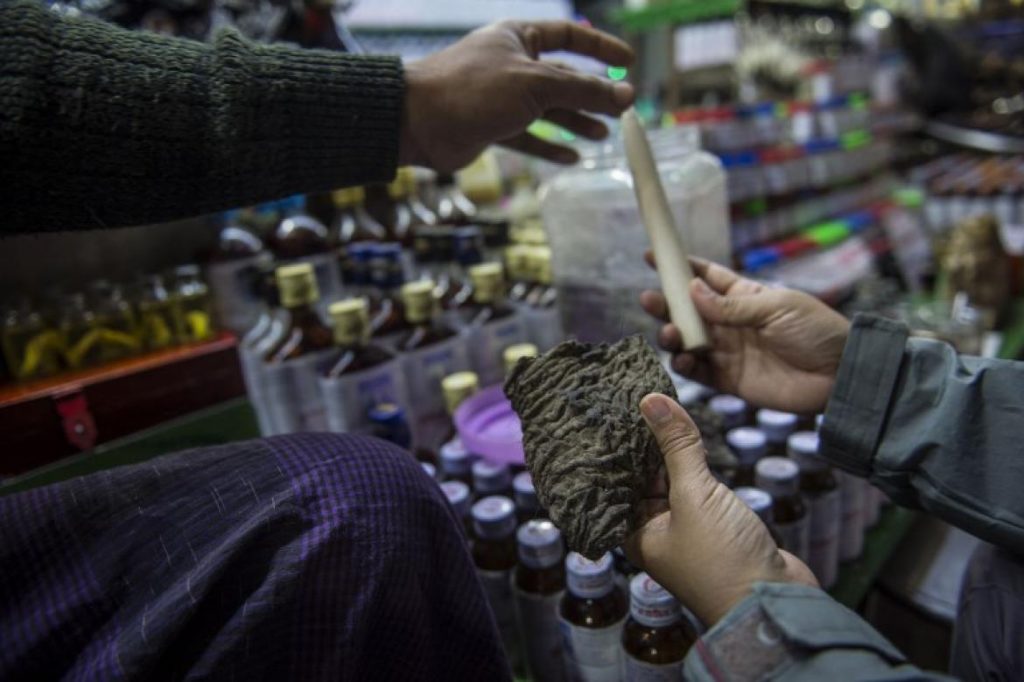
Post-coup protections lacking
The elephants at the park are an example of the mixed fortunes of Myanmar’s elephants in the aftermath of the coup. The reunion of the 35 elephants with their oozis has ensured that they are cared for, but the same can’t be said in other parts of the country.
Domesticated elephants are owned by either the state’s Forest Department or Myanma Timber Enterprise, or by private companies. After the coup, some owners found they couldn’t put the elephants to work and lacked money to buy food. Some also lacked the open space necessary for the large creatures to move about comfortably.
Subsequently many domesticated elephants were left to feed and roam in forests and became vulnerable to being killed by poachers.
A former senior Forest Department official who joined the CDM and now works for the National Unity Government’s environment ministry told Frontier that elephants in Ayeyarwady, Bago and Yangon regions in particular had always been at risk from poachers due to owners allowing them to roam freely. He said they were in much greater danger since the coup.
“The collapse of the administration system has exacerbated the risk to the animals,” he said by email.
The collapse of government oversight means that the Forest Department now under the junta’s control doesn’t have enough staff, and those who remain don’t dare to stay in national parks and wildlife sanctuaries to ensure that elephants and other animals are protected.
“Nobody wants to go into the forests anymore because their security can’t be guaranteed, and it has been like this for nearly two years,” said U Tun Lay, a village administrator in Ayeyarwady Region’s Ngapudaw Township.
Tun Lay has received international and domestic recognition and awards for his efforts to protect wild elephants. He is concerned that any hard-won progress Myanmar has made in conservation is now being undone. Tun Lay said that the animal conservation movement in Myanmar “could be completely stopped” and access to information about illegal wildlife trading will be much harder to get.
In August, the Ayeyarwaddy Times quoted members of a private elephant owners’ association as saying they had been approached by Chinese brokers to sell elephants to them. The NUG’s environment ministry said it had received similar information.
A private owner of elephants in Kachin State told Frontier that Chinese brokers offered him up to 15 million kyat ($7,100) to buy some of his elephants, saying the broker offered to arrange the border crossing if the owner agreed to the trade. The broker specifically wanted old but living elephants over young elephants or animal parts.
“I think they will kill the elephants for the skin and for other products, that’s why they prefer the old elephants,” the elephant owner said. “Regardless, if we sold our elephants to China, we don’t expect the elephants to be alive for long.” The owner declined the sale.
Ma Naw Bway, an elephant owner from Bago Region, said that some other owners are desperate and want to sell their elephants to the Chinese brokers.
“Right now, only an owner understands the expense of keeping an elephant. It’s almost two years and they have no work. When we can’t feed the elephants we let them roam in the forest, and there is a danger from hunters. That’s why we want to sell them if we can’t look after them.”
Procuring live elephants for cross-border trade to China is illegal and poses a significant threat to the animals. Asian elephants are a protected species under both Chinese and Myanmar wildlife protection laws. Nonetheless they are highly sought after in China for body parts, and the clandestine trade in wildlife and animal parts is booming along the border in the almost complete absence of law enforcement.
Meanwhile, Bo Cho and his family are happy to be back in the park and reunited with Nay Toe. Bo Cho is determined not to lose the elephants again.
“In Myanmar there is a saying: The death of an elephant is equal to the death of three kings,” he said.
“I would rather have three kings die, or Min Aung Hlaing die three times over, but I don’t want a single elephant to die.”


